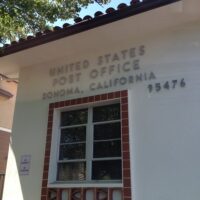When a major earthquake hits Creekside Village at 1 p.m. Saturday, no one is quite sure what will happen – and that’s the point.
“I hope that … what works, works – and what doesn’t, we’ll learn from and revise our plan to hopefully make it better the next time,” neighborhood disaster activist Charlene Rundstrom said last week. “We’re just kind of doing with what we’ve got.”
Although the 313-home neighborhood southwest of Sonoma has conducted mini-disaster drills in the past, Saturday’s exercise will be the first to involve the entire community. Dubbed “Neighbors Helping Neighbors,” the plan is loosely based on the COPE (Citizens Organized to Prepare for Emergencies) program developed for the Oakmont community north of Kenwood.
COPE’s organizing principle is for neighborhoods to become self-sufficient by first taking a survey of resident skills, needs and equipment, then applying that knowledge toward the goal of surviving three to five days without help.
In Creekside’s case, the skills assessment turned up retired physicians, nurses, veterinarians and attorneys, as well as a caterer who offered advice on maintaining and dealing with food and other supplies. More than 30 people have been trained in first aid, and the area has been divided into 24 zones, each with a central meeting place and “neighborhood responder” to make sure everyone is safe – and to account for residents who don’t show up.
The community’s clubhouse will be used as a combination assembly and first-aid center where donations of clothing and other necessaries can be collected and distributed. The neighborhood organization recently spent $4,000 to have an Oakland-based company rate the clubhouse’s seismic strength and found that while the building was structurally sound, the main room’s large clerestory windows weren’t – so the group contracted with a local safety-film company to line the windows.
“The window may come in, but it’s not going to shard and go flying across the room,” Rundstrom said.
Rundstrom’s colleague Marty Nemiroff, who helped organize Creekside’s original disaster plan eight years ago, said the Sonoma Valley Fire and Rescue Authority was invaluable in helping set up the current response – teaching residents such disaster-related skills as how to operate fire extinguishers, and find and turn off home electrical and gas connections.
“Even though it’s tract housing, some shutoffs are located in neighbors’ yards,” Nemiroff said.
While Creekside may be making survival plans, they won’t be equipped as a public shelter, Nemiroff said.
“We’re going to be on our own for two to three days, I think,” he said, adding in the case of an actual emergency, most resources will likely be sent to Sonoma proper and other population-dense areas. “Personal disaster kits will be the norm.”
SVFRA Capt. Mike Bruno agreed, saying that in a major catastrophe emergency personnel will have their hands full – and that the more individuals and neighborhoods are prepared to meet sudden challenges, the better their chances of surviving same. He added that the department will assist any neighborhood groups with their own advance planning.
“The big thing here is to be proactive, not reactive, and I can’t stress that enough,” he said. “And the folks at Creekside are proving that – they’re a good bunch of folks willing to put in the extra effort … and they’re the ones who are going to fare the best.”
Retirement community drills for disaster
More from NewsMore posts in News »




